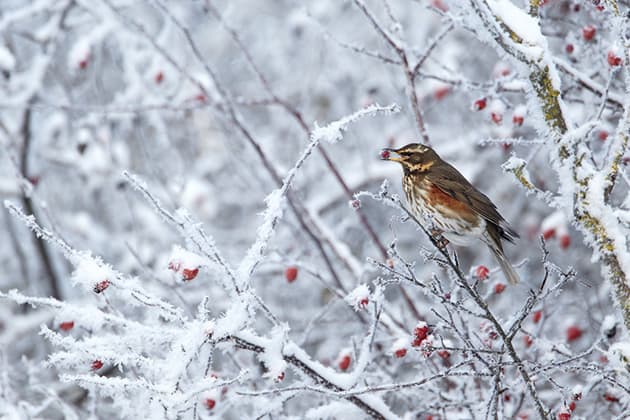One of the biggest challenges when writing seasonally focused features is that you can never be quite sure what the weather will be like by the time the article is published: will we be experiencing a grey and drizzly winter spell, a cold crisp one or, even better (speaking as a photographer of the natural world, that is), a sprinkling of snow? Fortunately, when it comes to bird photography, it doesn’t really matter what the conditions are, because at this time of year birds are probably at their most obliging. This is because their main driving force is simply finding enough food to help them survive another day or so.
As a result, with a little planning and a watchful eye on the weather conditions, bird photographers can pretty much guarantee an array of different subjects and situations on which to train their lenses. For hardy individuals (those accustomed to shooting in extreme environments), this is the perfect time of year to be heading into the mountains in search of seasonal specialists such as ptarmigan, and the chance of that classic white bird on white snow image.
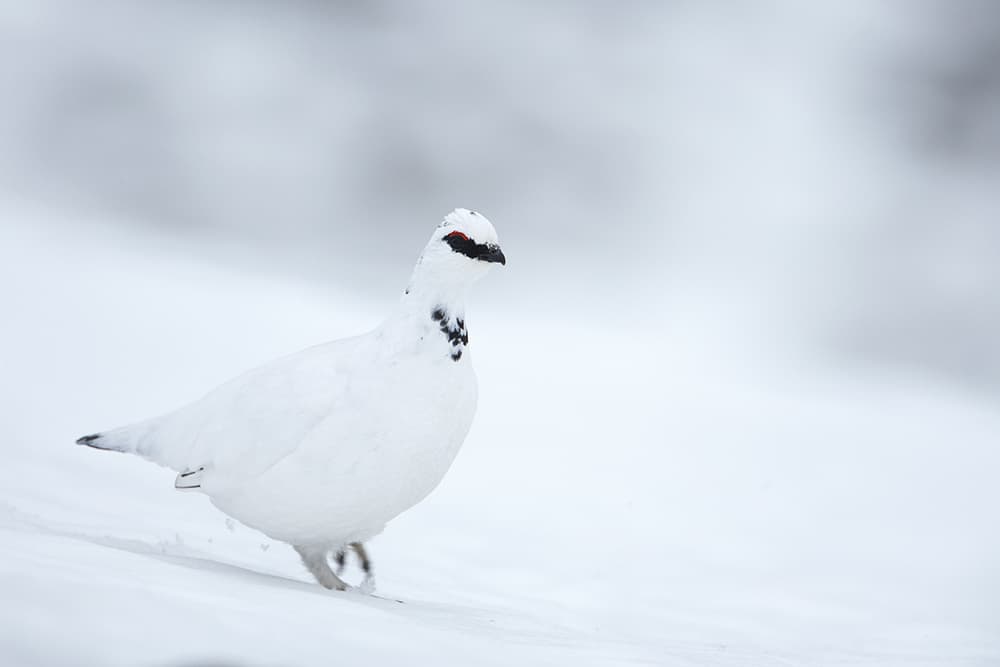
If you’re feeling ambitious, head in to the mountains to photograph seasonal specialists such as ptarmigan. Canon EOS-1Ds Mark II, 700mm, ISO 200, 1/320sec at f/5.6.
Major hotspots
For those seeking less physical challenges, feeding times at some of the UK’s major hotspots can yield excellent results. Gigrin Farm in mid Wales, for example, is the ideal place to shoot red kites (there are generally in excess of 100 birds visiting the farm at this time of the year). Alternatively, try any of the Wildfowl and Wetland Trust reserves, timing your visit to coincide with feeding times – you may well be greeted by huge gatherings of geese or swans.
Don’t be put off by the word ‘hotspots’. Despite their popularity, these sites provide plenty of opportunities for unique photography – many visitors will be tempted to use a long lens for frame-filling shots, but you could also try using a wideangle to include more of the surrounding environment, for example.

If you’re visiting a hotspot such as Caerlaverock WWT, arrange your visit around feeding time. Canon EOS-1Ds Mark II, 48mm, ISO 400, 1/200sec at f/5.6.
Staying close to home
For me, though, one of the main attractions of winter is the chance it offers to build up a photographic portfolio, and experiment with different approaches. It’s a great time to try out new techniques and, just as crucial, to sharpen your observational skills. Watching how a bird behaves will enable you to create your own set-ups to attract woodland or garden species.
These set-ups can be as simple or as complex as you like – it just depends how much space, time and effort you can afford to commit to the task. At the most basic level, a single feeder will work. To maximise its appeal, place the feeder near an existing branch or perch that you like the look of, and within a few days you will almost certainly have visitors, many of which will use it to sit on and wait their turn before going to feed.
If you want to take this a step further, buy a feeder on a pole and attach perches just under the container itself – this will allow you to take clean images of the birds on a changeable array of branches. Small twigs do not attract climbing birds such as nuthatch and woodpecker, so a good alternative to the pole feeder is a three or four foot trunk of, say, silver birch, which you can set into a bucket using quick-set cement. Simply drill a few holes in the back of the trunk and fill them with peanuts – the birds will soon find them.
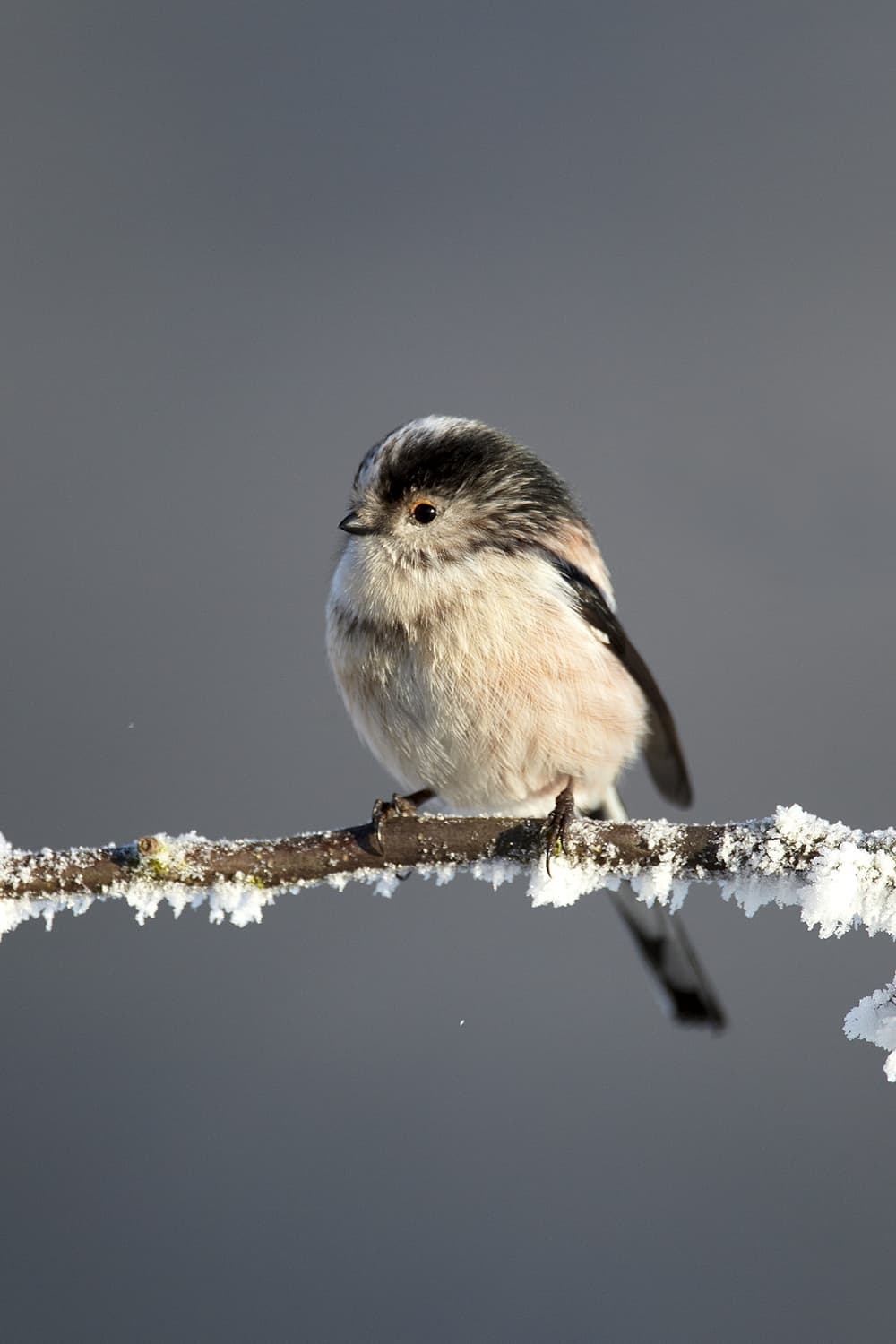
Long-tailed tit on frosty branch. Canon EOS -1D Mark IV, 700mm, ISO 400,1/1300sec at f/5.6.
Bird photography theatre
There are a number of practical considerations when it comes to creating your own bird photography theatre. Probably the most important is how the background works in relation to the stage itself. In an ideal world, the background should be as clean as possible and as far away from the stage as space will allow. You will almost certainly be shooting with the lens wide open to enable a fast shutter speed – most birds don’t sit still for long – but doing so will also help to give you a nice clean canvas.
If your plot is relatively small, then it’s possible to create your own background (as well as hiding fence posts, gates etc) by using scrim netting suspended between two poles, and placed as far behind the set as you can manage. The key here is to use netting that is matt in texture, preventing reflected light or hotspots from ruining your images.
If you’re feeling ambitious, you might like to consider constructing a small reflection pool in the garden, although you do need quite a bit of space for this. The closer to the water level you get, in order to achieve the intimacy of an eye-level shot, the more water you will require to create an entire reflection.
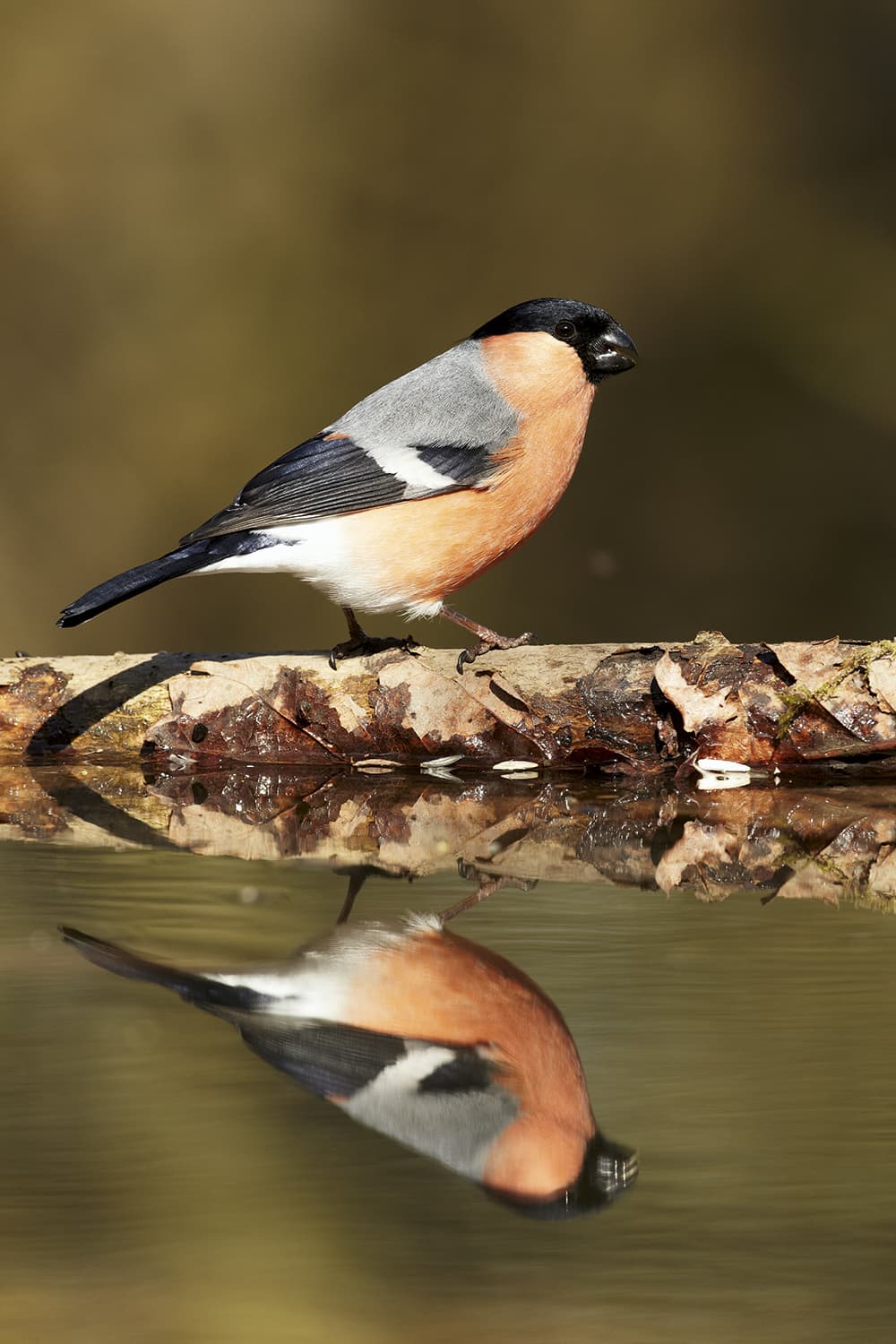
Bullfinch next to a small reflection pool. Canon EOS-1D Mark IV, 500mm, ISO 400, 1/640sec at f/8.
Feeding habits
Before you get carried away with props and reflections, keep things simple and spend some time observing how different species of bird approach and feed – only then will you be able to create settings that optimise their visits.
All members of the tit family, for example, are ‘grab and go’ birds, but by carefully sticking some high-energy bird fat to the rear of your perch – out of sight of the camera – you can encourage them to sit for a few seconds while they grab a beak full of food. Finches on the other hand will happily feed on a scattering of seeds for quite some time, so placing some on the rear of a natural food source, such as a teasel, will persuade them to rest on a suitably photogenic perch.
The most important thing is to watch and understand your subject and then plan your set-ups to reflect what you have discovered. Have patience and wait for the image you have previsualised to materialise. Obtaining high-quality, engaging images of common birds where the pose, look, light and setting all come together is tricky, but the rewards are great.
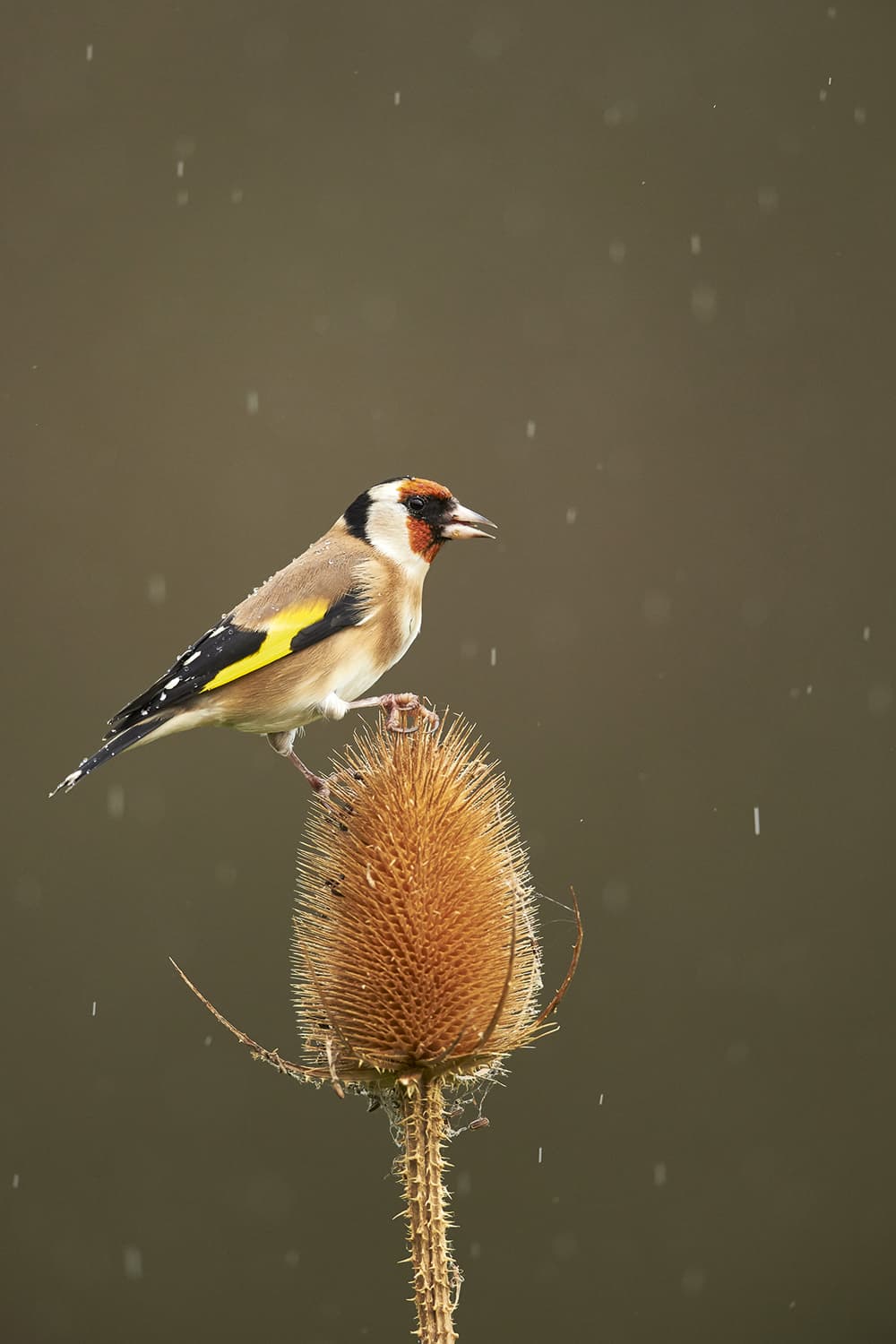
Goldfinch on teasel. Keep a watchful eye on the weather for fresh opportunities. Canon EOS-1D X, 500mmwith1.4xIII extender, ISO1600, 1/640sec at f/5.6.
Setting up perches
Understand bird behaviour

Nuthatches are natural climbers, so placing some peanuts at the base of this carefully positioned log encouraged them to run down to collect some. It was then a question of waiting for the perfect time of day as far as the light was concerned.
Set-up for early morning
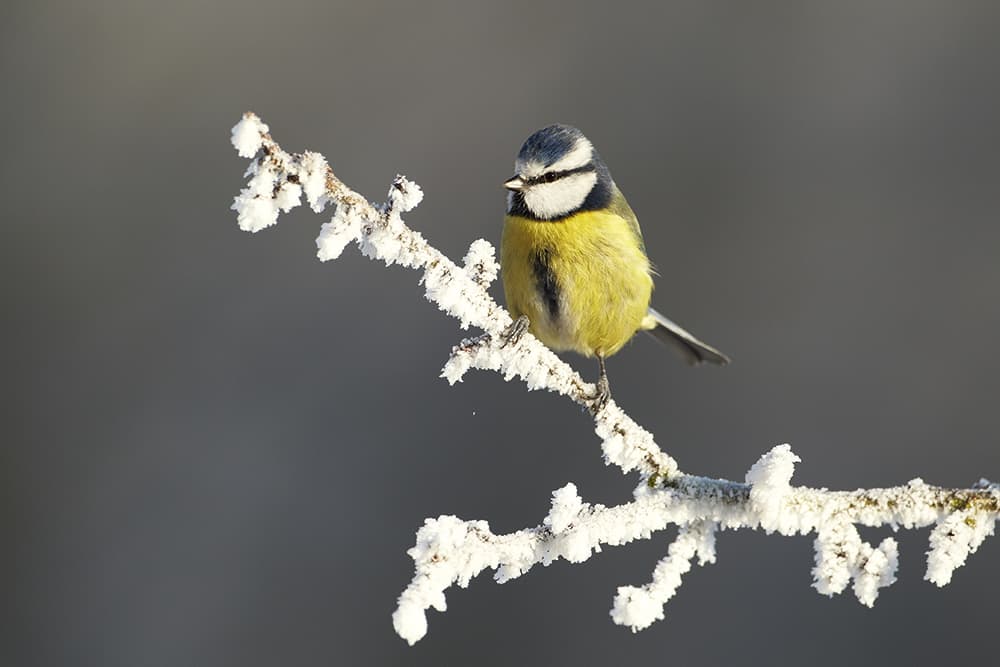
During winter, the first few hours of the day are among the busiest for birds, as they need to restore calories lost overnight. Having a set-up that catches the first sun of the day while also retaining the frost takes some planning, but it’s rewarding when it works.
Complement the background
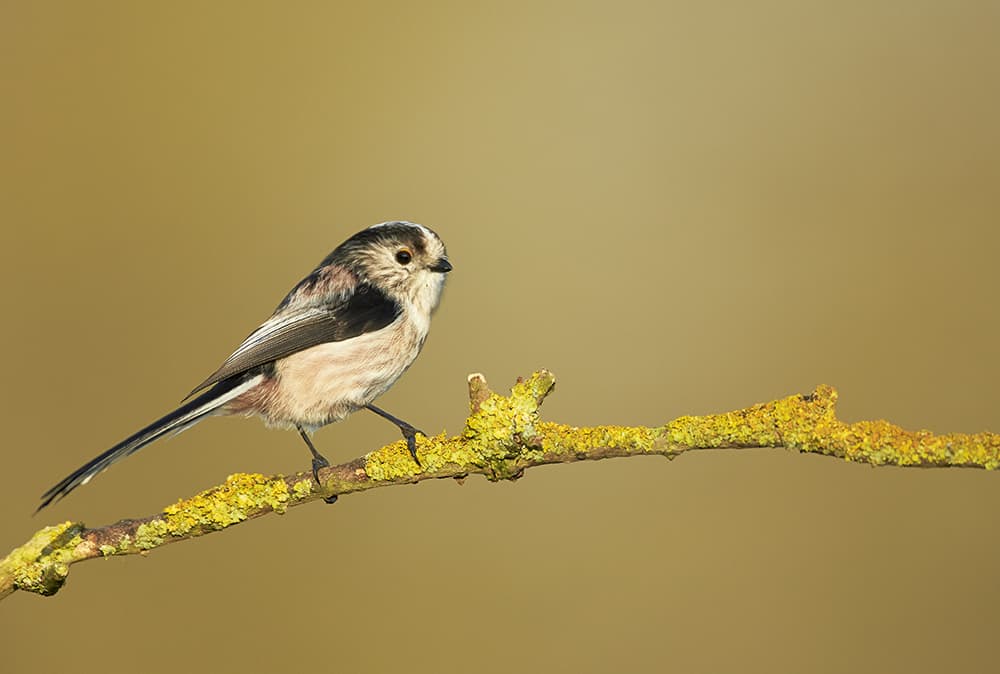
The background here was a distant oak tree. In the late afternoon light it had turned an intense yellowy-brown, and so a perch with yellow lichens on it complemented this, while also matching the tiny orange eyebrow of the long-tailed tit.
Find the right perch

Selecting a good perch is a fine balancing act. You need it to be strong enough to support the weight of the bird you’re trying to attract, yet delicate enough to avoid dominating smaller species. Look for interesting shapes and leaf positions, too.
Use a table

I am a big fan of using a table (a wallpaper-pasting one is ideal) and creating sets on it. This can be a roll of turf, recreating a woodland floor with a collection of leaves, or more intricate settings using stumps, ivy, bracken and the like.
Post-processing tips
1. Make sure any snow is white

I am often asked how to keep snow white. The key is to carefully check the histogram as you shoot, and make sure that you marginally overexpose the overall scene (especially if you shoot raw files). A slight tweak of the highlights afterwards retains the exposure in the bird and ensures nice white snow.
2. Use a warm white balance in the winter sun
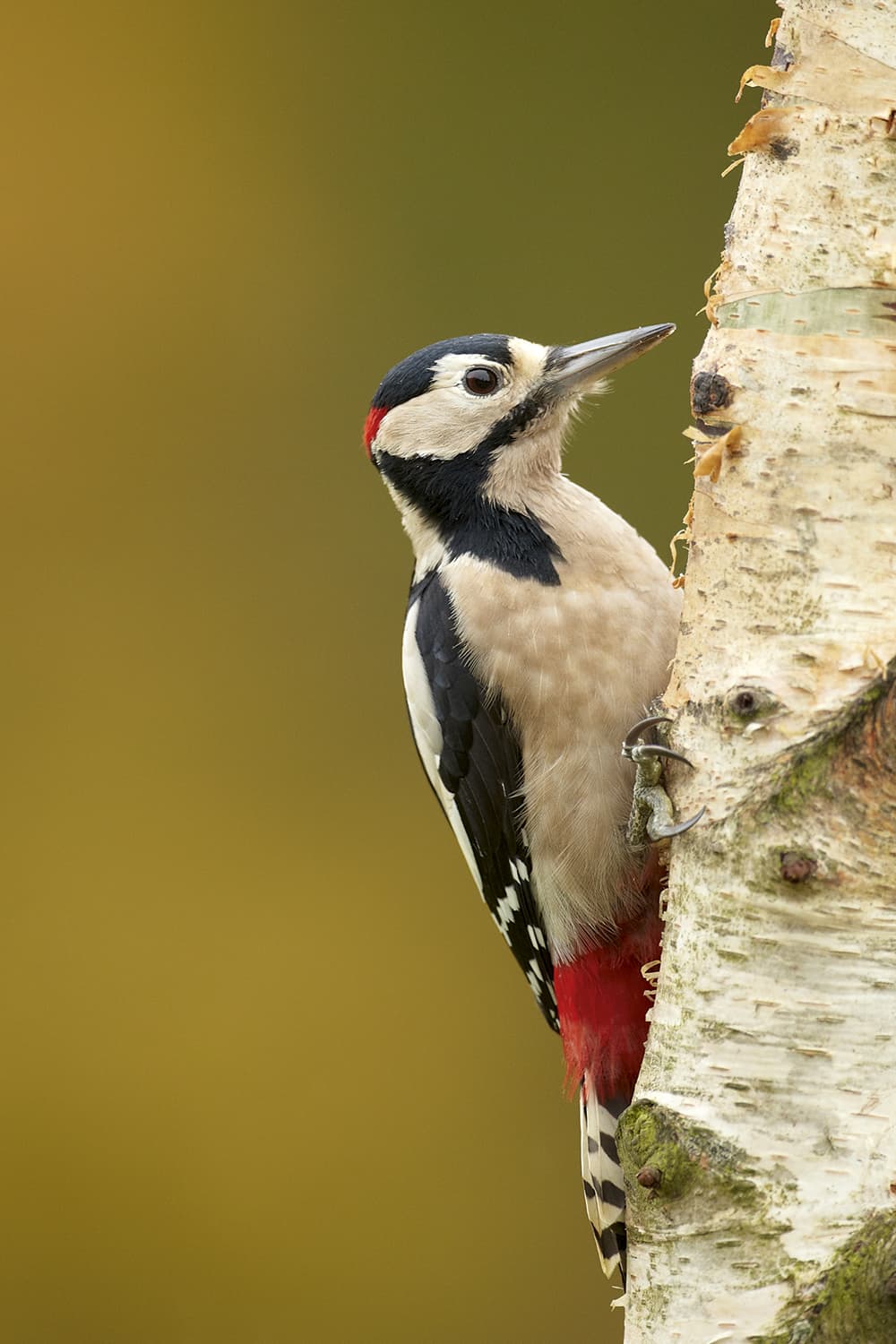
Winter sun has an intensity that lights up detail in birds’ feathers. Although this is something you can do during the shooting phase, have a look at warming up the white balance during processing, too–I start at around 5800K but go warmer if the bird or background suit it.
3. Crop your composition
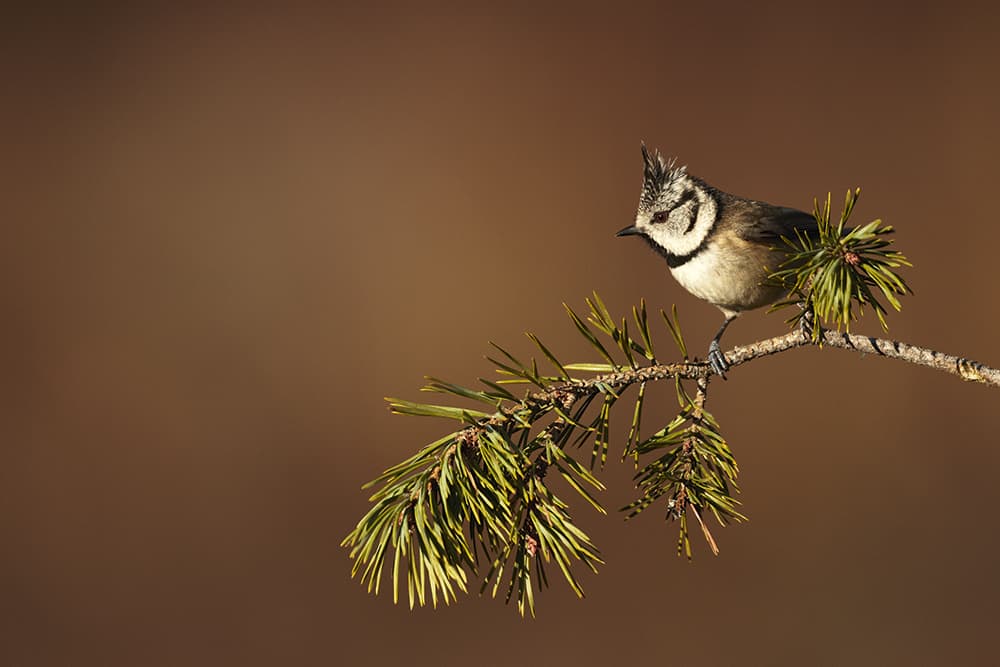
Although you should always try to get the composition right at the time of shooting, the speed at which birds move means judicious cropping is often required. Use this process to perfect your compositions. The rule of thirds never fails here.
4. Use the clarity slider

Freezing misty days can often create the most activity at a feeding set-up. But these images can often look a bit insipid on first appraisal. Resetting the black point in Levels, adjusting the midpoint, and careful use of the clarity slider can often invigorate these shots.
5. Don’t delete too quickly

I am notoriously slow at processing my files, but this is in part deliberate as I feel a good break between shooting and processing allows the emotions of the session to subside and makes you more objective as you appraise. If you can’t wait, just delete the ones that aren’t sharp!
Why it works
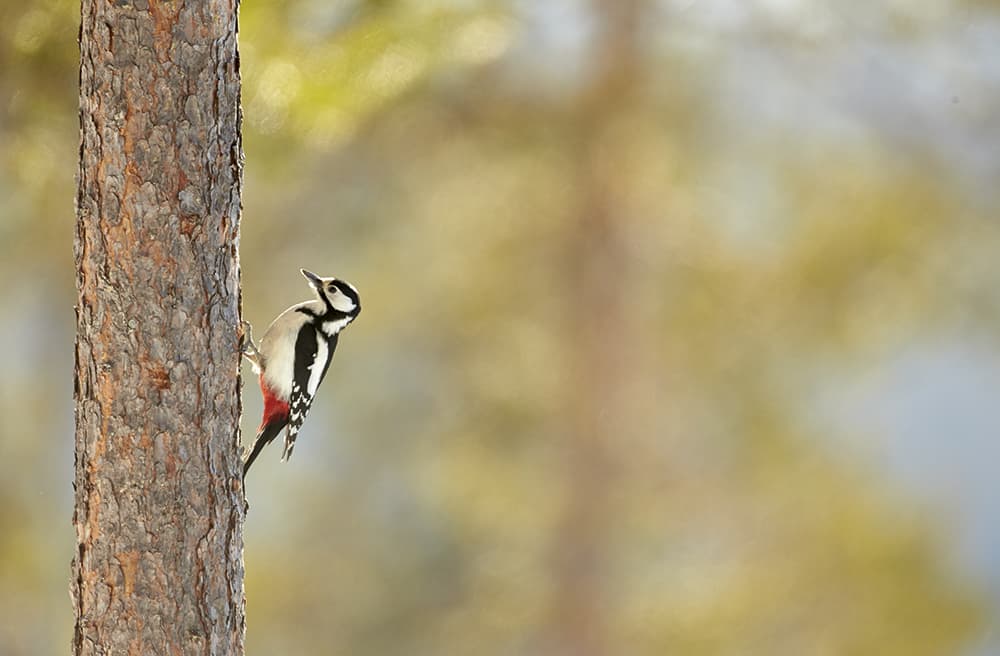
These days, I am increasingly drawn to revealing texture in backgrounds as opposed to reducing the area behind my subject to a classic uniform colour. I still use a shallow depth of field to emphasise the subject, but I include texture to provide a sense of place. This image of a great-spotted woodpecker just screams pine forest when you look at it. The subject is small in the frame, allowing plenty of background to be included, there is an out of focus tree in the distance, and the light on the pine needles leaves no doubt as to the location. The longer you look at the background, the more it reveals itself, which takes the image beyond a simple portrait.
Kit list
Tripod and head combination
I try to previsualise where I want a bird to perch, and position my gear accordingly. Tweaks are often necessary, though, so I use a Gitzo tripod and Wimberley head to allow both flexibility and stability.
Battery pack
Being able to quickly switch to portrait format is extremely useful. Adding a battery pack to your camera will enable you to use a second shutter release button, making shooting in this way much easier.
CamRanger
Once you have birds coming to a table set-up regularly, setting up your camera and operating it remotely using a device like a CamRanger (operated from your tablet) opens up a whole new world of image opportunities.
Man-made props
Junkyards, car-boot sales and the like are great places to find agricultural props, as I call them, to introduce to your feeding area. I try to build up a collection of props throughout the year.
Remote flashguns
High-speed flash techniques using a couple of flashguns and a trigger system are a great way to freeze birds in flight. I spent some time perfecting this with hummingbirds last year and it will be a focus for me this season.
Warm clothing
This might sound obvious, but sitting still in the cold for a length of time is harder than just being out in it. Warm footwear and a hat are a must, but for me fingerless gloves over some thin silk
liners are also essential.
Mark Sisson has been a full-time wildlife photographer for almost 15 years. Along with competition successes, he is a regular feature writer and has had several books published. Mark runs the UK wildlife photography holiday company Natures Images. For further details, visit www.natures-images.co.uk and www.marksissonphoto.co.uk.

